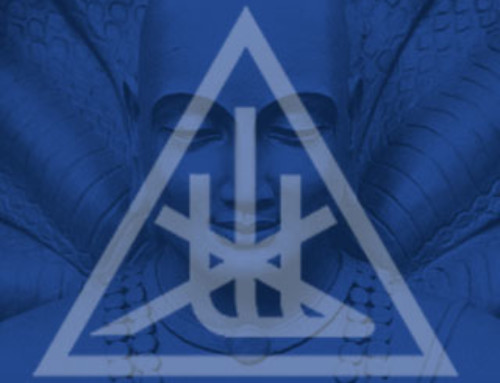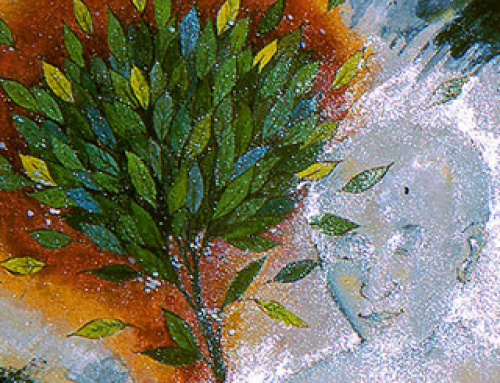For a long, long time, the universe and everything within it has been subject to predispositions. The baser ones merely clash and crash. Humans are no exception. Though we are bound by them, we can also be freed by them. We mostly make them and it takes a long time to dissolve them. In sentient beings, the baser ones strive to control that which cannot be controlled. This universal tendency towards predispositions has been known since time immemorial. The most ancient texts named this tendency: Saṃskāra.
To briefly introduce the concept of Saṃskāras:
Identified in ancient Vedanta and described in Upanishadic writings, the nature of Saṃskāras are defined and elucidated in Hinduism and Buddhism. Saṃskāras are said to be the faint habit forming tendencies/subtle memories, left on your mind by experiences you had in your present life or in past lives.
In the singular: Saṃskāra is a Sanskrit term for an impression under the impulse of previous impressions; and refers to the imprints left on the subconscious mind by life experience. These colour all of life, one’s nature, responses, states of mind, etc., then influence how you look at things and how you act. Supposed heterodoxies such as Buddhism and Jainism, strive for greater clarity and insight into predispositions. Unlike rote religious dogma and various forms of surface mentalism such as psychology and psychiatry, too often overly bogged down with the external details of past; the proper study of Saṃskāras instead addresses the forces which drive the present.
A simple analogy of Saṃskāras is that of cow tracks leading to waterholes. They appear to meander unnecessarily, but cows still stick to them. Or of habit patterns which leave tracks upon which consciousness is forced to travel, like a train on set rails. Most are passed down through generations and can be conceived of as species-specific behaviours which become entangled webs of interdependence.
Now that should make the idea pretty self evident. The term Saṃskāra can refer to any mindless, emotively charged, habituated pattern and may include compulsive obsessive behaviours, traditions, rules, values of society or community, conventions, religious ritualism and so on, that are ingrained in former activity, whilst not manifesting exactly as they were formed, continue to determine future modes of behaviour. Saṃskāras also include all the beneficial tendencies such as the proclivity to meditate, compassion, value producing activities and service.
The Sanskrit term: Saṃskāra – figures prominently in the teaching of the Buddha. Here the word connotes ‘that which has been put together’ and ‘that which puts together’. In the first (passive) sense, Saṃskāra refers to conditioned phenomena generally, but specifically to all mental “dispositions”. These are called ‘volitional formations’ both because they are formed as a result of volition and because they are causes for the arising of future volitional actions. In the second (active) sense of the word, Saṃskāra refers to that faculty of the mind/brain apparatus (sankhara-khandha) that puts together those formations. In Buddhism, Saṃskāras are considered to be the source of conditioned mind and the product of ignorance. English translations for Saṃskāra, in the first sense of the word include ‘conditioned things,’ ‘determinations,’ ‘fabrications’ and ‘formations,’ and particularly when referring to mental processes, ‘volitional formations’. In other words “ki,” will, or intention.
A similar latter day concept, arising in the western mind, is that of Memes: A Meme is said to be an idea, behaviour or style, that spreads from person to person within a culture. Just as genes transmit biological information, Memes transmit ideas and belief information, acting as a unit for carrying cultural ideas, symbols or practices, which can be transmitted from one mind to another through writing, speech, gestures, rituals or other imitable phenomena. Supporters of the concept regard Memes as cultural analogues to genes in that they self-replicate, mutate and respond to selective pressures.
The word “Meme” is a shortening, modelled on “gene,” of mimeme (from Ancient Greek mimēma, “something imitated”, from mimeisthai, “to imitate”, from mimos “mime”), together with a pun on the French word même (“same”). Coined by the British evolutionary biologist Richard Dawkins in the book: “The Selfish Gene” (1976) as a concept for discussion of evolutionary principles in explaining the spread of ideas and cultural phenomena; examples of Memes include melodies, catch-phrases in language, sexual habits, fashion and technology.
Advocates of the Meme idea say that Memes may evolve by natural selection in a manner analogous to that of biological evolution. Memes do this through the processes of variation, mutation, competition and inheritance, each of which influence a Meme’s reproductive success.
Memes spread through behaviours that they generate in their hosts. Memes that propagate less prolifically may become extinct, while others may survive, spread and for better or for worse, mutate. Memes that replicate most effectively enjoy more success. Some Memes may replicate effectively even when they prove to be detrimental to the welfare of their hosts.
As a field of study, Memetics arose in the 1990s to explore the concepts and transmission of Memes in terms of an evolutionary model. Criticism from a variety of fronts has challenged the notion that scholarship can examine Memes empirically, but developments in neuroimaging, may however, make empirical study possible.
In short, the concept of Memes is a simplified rendition of one attribute of Saṃskāras.
The dictionary defines “Predisposition” thus:
noun
a liability or tendency to suffer from a particular condition, hold a particular attitude, or act in a particular way. : a person may inherit a predisposition to behaviours, such as also with genetic predisposition.
The search for the existence of universal ultimate truth, strives for the dissolving of Saṃskāras, as best achieved through direct observation and the lucid noticing of experience. But all too often the simplicity is buried under tomes of descriptions about Saṃskāras, rather than practices that will achieve such liberation. Fanciful entanglement into too many concepts about Saṃskāras, tend to entrap the mind with more ideas about ideas instead, tending to bog down seekers for liberation in excessive and unnecessary verbiage and often rote ritual that merely becomes another habit.
The best and most ancient method of learning both good and bad behaviours is by mimicking. Through repetition, it becomes entrenched as habit. The best way of dissolving discordant behaviours is to copy harmonious behaviours and by BEING FULLY CONSCIOUS during the repeated exercise of skill in action.
Without predispositions we would become blanks. We need predispositions to survive conscious life on earth. What we do not need, are those predispositions that cause us to drive with the brakes on and with our eyes covered. We are empowered to exercise self-will to CHOOSE OUR PREDISPOSITIONS to the more favourable ones. Making an harmonious choice (right thought), then actioning the choice (right action), enables the beginning of disentanglement of the knots of habituation. In this way the individual can still have a point of reference, without it becoming a vice that engenders harmful results.
Meher Baba describes Saṃskāras thus in: The Removal of Saṃskāras
THE CESSATION OF SAṂSKĀRAS: THEIR WEARING OUT AND UNWINDING
“Human beings do not have Self-illumination, because their consciousness is shrouded in Saṃskāras or the accumulated imprints of past experience. In them the will-to-be-conscious with Saṃskāras prevent Self-illumination which evolution started has succeeded in creating consciousness. But it does not arrive at the knowledge of the Oversoul, because the individual soul is impelled to use consciousness for experiencing Saṃskāras instead of utilising it for experiencing its own true nature as the Oversoul. The experiencing of Saṃskāras keeps it confined to the illusion of being a finite body trying to adjust itself in the world of things and persons. The individual souls are like the drops in the ocean. Just as each drop in the ocean is fundamentally identical with the ocean, the soul which is Problem of securing release from Saṃskāras individualised due to bias or illusion, is still the Oversoul and does not really become separate from the Oversoul. Yet the envelope of Saṃskāras, by which consciousness is covered… (more here):
Predispositions/Saṃskāras/Memes/unconscious habituated patterns, are everywhere. Their actions result in birth, life, death, love, suffering, war, peace and the whole pantheon of possibilities a human being can experience. And beyond.
The “beyond” is not much of a viable immediate concern, since it cannot be reached. What can be reached are ourselves and our habits, which can be modified somewhat to make life navigation more pleasant and less fraught with worry, stress, suffering and all the woes we make for ourselves.
Energy in motion brings to fruition all factors in life and of the natural order in the universe. This may cause energy flows to entangle and amass energy and consequence debt. The active study of energy in motion and interaction in neutralising conflict, enables the unravelling of entanglements which then results in opening the eye of the heart, to see through those blind spots which bring about the mazes of Saṃskāras in the first place. We learn to take predisposition snapshots and to identify the causes of the problem, then adapt to a more harmonious variable each time we notice one. The efficiency and economy of the universe is then reborn in us.
Just as the Hadron Collider is used to capture the predisposition snapshots of sub-atomic particles to unlock the “secrets” of the universe; so also, in a like manner, when we learn to exercise our consciousness to notice snapshots of predispositions in-between the frames of time, in training, the mind clears and learns to notice alternate possibilities than the ones we seem stuck on. These “noticings” become the foundational basis for the increase of skilful means; the effectiveness of meditation techniques; and thereby; liberation from the entangling effects of contending and struggling futilely without skill. This is because scientific spiritual practices seek to express the skill of harmonising the will or intention, in all its uses and applications.
Regular meditation as a Way of Life, puts into place and anchors harmonious Saṃskāras, useful to navigating life in earth, whether in calm weather, or a storm, without adding harm, accruing energy debt, or consequence entrapment.
On this basis, consistent and regular spiritual practice over time, exorcises discordant predispositions, by neutralizing undesirable Saṃskāras; and producing harmony thereby.
– Nev Sagiba (www.aikiblue.com)
For a long, long time, the universe and everything within it has been subject to predispositions. The baser ones merely clash and crash. Humans are no exception. Though we are bound by them, we can also be freed by them. We mostly make them and it takes a long time to dissolve them. In sentient beings, the baser ones strive to control that which cannot be controlled. This universal tendency towards predispositions has been known since time immemorial. The most ancient texts named this tendency: Saṃskāra.
To briefly introduce the concept of Saṃskāras:
Identified in ancient Vedanta and described in Upanishadic writings, the nature of Saṃskāras are defined and elucidated in Hinduism and Buddhism. Saṃskāras are said to be the faint habit forming tendencies/subtle memories, left on your mind by experiences you had in your present life or in past lives.
In the singular: Saṃskāra is a Sanskrit term for an impression under the impulse of previous impressions; and refers to the imprints left on the subconscious mind by life experience. These colour all of life, one’s nature, responses, states of mind, etc., then influence how you look at things and how you act. Supposed heterodoxies such as Buddhism and Jainism, strive for greater clarity and insight into predispositions. Unlike rote religious dogma and various forms of surface mentalism such as psychology and psychiatry, too often overly bogged down with the external details of past; the proper study of Saṃskāras instead addresses the forces which drive the present.
A simple analogy of Saṃskāras is that of cow tracks leading to waterholes. They appear to meander unnecessarily, but cows still stick to them. Or of habit patterns which leave tracks upon which consciousness is forced to travel, like a train on set rails. Most are passed down through generations and can be conceived of as species-specific behaviours which become entangled webs of interdependence.
Now that should make the idea pretty self evident. The term Saṃskāra can refer to any mindless, emotively charged, habituated pattern and may include compulsive obsessive behaviours, traditions, rules, values of society or community, conventions, religious ritualism and so on, that are ingrained in former activity, whilst not manifesting exactly as they were formed, continue to determine future modes of behaviour. Saṃskāras also include all the beneficial tendencies such as the proclivity to meditate, compassion, value producing activities and service.
The Sanskrit term: Saṃskāra – figures prominently in the teaching of the Buddha. Here the word connotes ‘that which has been put together’ and ‘that which puts together’. In the first (passive) sense, Saṃskāra refers to conditioned phenomena generally, but specifically to all mental “dispositions”. These are called ‘volitional formations’ both because they are formed as a result of volition and because they are causes for the arising of future volitional actions. In the second (active) sense of the word, Saṃskāra refers to that faculty of the mind/brain apparatus (sankhara-khandha) that puts together those formations. In Buddhism, Saṃskāras are considered to be the source of conditioned mind and the product of ignorance. English translations for Saṃskāra, in the first sense of the word include ‘conditioned things,’ ‘determinations,’ ‘fabrications’ and ‘formations,’ and particularly when referring to mental processes, ‘volitional formations’. In other words “ki,” will, or intention.
A similar latter day concept, arising in the western mind, is that of Memes: A Meme is said to be an idea, behaviour or style, that spreads from person to person within a culture. Just as genes transmit biological information, Memes transmit ideas and belief information, acting as a unit for carrying cultural ideas, symbols or practices, which can be transmitted from one mind to another through writing, speech, gestures, rituals or other imitable phenomena. Supporters of the concept regard Memes as cultural analogues to genes in that they self-replicate, mutate and respond to selective pressures.
The word “Meme” is a shortening, modelled on “gene,” of mimeme (from Ancient Greek mimēma, “something imitated”, from mimeisthai, “to imitate”, from mimos “mime”), together with a pun on the French word même (“same”). Coined by the British evolutionary biologist Richard Dawkins in the book: “The Selfish Gene” (1976) as a concept for discussion of evolutionary principles in explaining the spread of ideas and cultural phenomena; examples of Memes include melodies, catch-phrases in language, sexual habits, fashion and technology.
Advocates of the Meme idea say that Memes may evolve by natural selection in a manner analogous to that of biological evolution. Memes do this through the processes of variation, mutation, competition and inheritance, each of which influence a Meme’s reproductive success.
Memes spread through behaviours that they generate in their hosts. Memes that propagate less prolifically may become extinct, while others may survive, spread and for better or for worse, mutate. Memes that replicate most effectively enjoy more success. Some Memes may replicate effectively even when they prove to be detrimental to the welfare of their hosts.
As a field of study, Memetics arose in the 1990s to explore the concepts and transmission of Memes in terms of an evolutionary model. Criticism from a variety of fronts has challenged the notion that scholarship can examine Memes empirically, but developments in neuroimaging, may however, make empirical study possible.
In short, the concept of Memes is a simplified rendition of one attribute of Saṃskāras.
The dictionary defines “Predisposition” thus:
noun
a liability or tendency to suffer from a particular condition, hold a particular attitude, or act in a particular way. : a person may inherit a predisposition to behaviours, such as also with genetic predisposition.
The search for the existence of universal ultimate truth, strives for the dissolving of Saṃskāras, as best achieved through direct observation and the lucid noticing of experience. But all too often the simplicity is buried under tomes of descriptions about Saṃskāras, rather than practices that will achieve such liberation. Fanciful entanglement into too many concepts about Saṃskāras, tend to entrap the mind with more ideas about ideas instead, tending to bog down seekers for liberation in excessive and unnecessary verbiage and often rote ritual that merely becomes another habit.
The best and most ancient method of learning both good and bad behaviours is by mimicking. Through repetition, it becomes entrenched as habit. The best way of dissolving discordant behaviours is to copy harmonious behaviours and by BEING FULLY CONSCIOUS during the repeated exercise of skill in action.
Without predispositions we would become blanks. We need predispositions to survive conscious life on earth. What we do not need, are those predispositions that cause us to drive with the brakes on and with our eyes covered. We are empowered to exercise self-will to CHOOSE OUR PREDISPOSITIONS to the more favourable ones. Making an harmonious choice (right thought), then actioning the choice (right action), enables the beginning of disentanglement of the knots of habituation. In this way the individual can still have a point of reference, without it becoming a vice that engenders harmful results.
Meher Baba describes Saṃskāras thus in: The Removal of Saṃskāras
THE CESSATION OF SAṂSKĀRAS: THEIR WEARING OUT AND UNWINDING
“Human beings do not have Self-illumination, because their consciousness is shrouded in Saṃskāras or the accumulated imprints of past experience. In them the will-to-be-conscious with Saṃskāras prevent Self-illumination which evolution started has succeeded in creating consciousness. But it does not arrive at the knowledge of the Oversoul, because the individual soul is impelled to use consciousness for experiencing Saṃskāras instead of utilising it for experiencing its own true nature as the Oversoul. The experiencing of Saṃskāras keeps it confined to the illusion of being a finite body trying to adjust itself in the world of things and persons. The individual souls are like the drops in the ocean. Just as each drop in the ocean is fundamentally identical with the ocean, the soul which is Problem of securing release from Saṃskāras individualised due to bias or illusion, is still the Oversoul and does not really become separate from the Oversoul. Yet the envelope of Saṃskāras, by which consciousness is covered… (more here):
<a href=”http://discoursesbymeherbaba.org/v1-65.php” target=”_blank”>http://discoursesbymeherbaba.org/v1-65.php</a>
Predispositions/Saṃskāras/Memes/unconscious habituated patterns, are everywhere. Their actions result in birth, life, death, love, suffering, war, peace and the whole pantheon of possibilities a human being can experience. And beyond.
The “beyond” is not much of a viable immediate concern, since it cannot be reached. What can be reached are ourselves and our habits, which can be modified somewhat to make life navigation more pleasant and less fraught with worry, stress, suffering and all the woes we make for ourselves.
Energy in motion brings to fruition all factors in life and of the natural order in the universe. This may cause energy flows to entangle and amass energy and consequence debt. The active study of energy in motion and interaction in neutralising conflict, enables the unravelling of entanglements which then results in opening the eye of the heart, to see through those blind spots which bring about the mazes of Saṃskāras in the first place. We learn to take predisposition snapshots and to identify the causes of the problem, then adapt to a more harmonious variable each time we notice one. The efficiency and economy of the universe is then reborn in us.
Just as the Hadron Collider is used to capture the predisposition snapshots of sub-atomic particles to unlock the “secrets” of the universe; so also, in a like manner, when we learn to exercise our consciousness to notice snapshots of predispositions in-between the frames of time, in training, the mind clears and learns to notice alternate possibilities than the ones we seem stuck on. These “noticings” become the foundational basis for the increase of skilful means; the effectiveness of meditation techniques; and thereby; liberation from the entangling effects of contending and struggling futilely without skill. This is because scientific spiritual practices seek to express the skill of harmonising the will or intention, in all its uses and applications.
Regular meditation as a Way of Life, puts into place and anchors harmonious Saṃskāras, useful to navigating life in earth, whether in calm weather, or a storm, without adding harm, accruing energy debt, or consequence entrapment.
On this basis, consistent and regular spiritual practice over time, exorcises discordant predispositions, by neutralizing undesirable Saṃskāras; and producing harmony thereby.






Leave A Comment